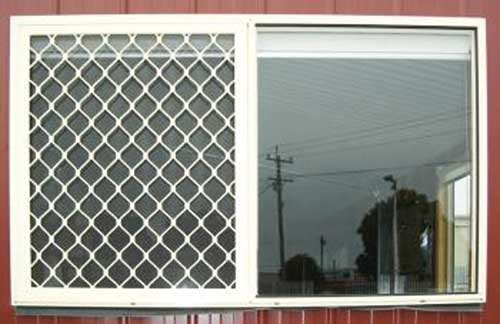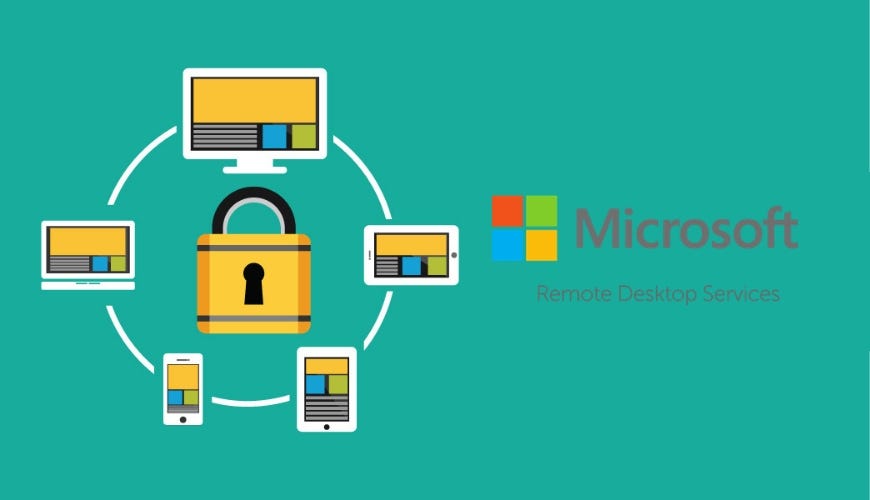Author: Peter Barnett Date: Mar 08, 2019
- Remote Start Installation with T-Harness. User rating, 4.3 out of 5 stars with 282 reviews. (282) $149.99 Your price for this item is $149.99.
- We will use WMIC remotely with domain administrator credentials to scan the list of nodes (PCs / laptops) and install software without interrupting user experience. Although there are several advanced ways to accomplish this task, we will consider the simplest method: the MSI installation file, which does not require options, is located on the.
- Remotely install and manage games When you’re away from your console or your Windows 10 device, you can still get ready to play your next Xbox console game. Use the Xbox mobile app, the Xbox Game Pass app, or the Microsoft Store on PC to remotely install games—so your games are ready when you are.
How to Install All Windows Updates in Powershell Remotely Author: Peter Barnett Date: Mar 08, 2019 Timely updating the software installed in the company and installing the required patches is one of the important tasks, the implementation of which allows you to avoid various software malfunctions, as well as to ensure an adequate level of security.
| Timely updating the software installed in the company and installing the required patches is one of the important tasks, the implementation of which allows you to avoid various software malfunctions, as well as to ensure an adequate level of security. How can you centrally and remotely manage software updates and patches in a company? To do this, there are various solutions called patch management tool. If you have ever had to install Windows updates, as in patching servers, you know you have to log into servers and allow updates to install, suppressing reboots along the way. I will focus on windows update in powershell today (Invoke-WUInstall), used to install Windows updates remotely. | Fully functional for 50 endpoints, never expires. More details > |
1. Installing PSWindowsUpdate PowerShell Module
Since PSWindowsUpdate is not installed on Windows by default, we have to first install the module.
PS C:WINDOWSsystem32> Install-Module PSWindowsUpdate -MaximumVersion 1.5.2.6
If we run Get-Command we can see all of the commands in the PSWindowsUpdate module:
PS C:WINDOWSsystem32> Get-Command -Module PSWindowsUpdate
CommandType Name Version Source
- ----------- ---- ------- ------
Alias Get-WindowsUpdate 1.5.2.6 pswindowsupdateAlias Hide-WindowsUpdate 1.5.2.6 pswindowsupdateAlias Install-WindowsUpdate 1.5.2.6 pswindowsupdateAlias Uninstall-WindowsUpdate 1.5.2.6 pswindowsupdateFunction Add-WUOfflineSync 1.5.2.6 pswindowsupdateFunction Add-WUServiceManager 1.5.2.6 pswindowsupdateFunction Get-WUHistory 1.5.2.6 pswindowsupdateFunction Get-WUInstall 1.5.2.6 pswindowsupdateFunction Get-WUInstallerStatus 1.5.2.6 pswindowsupdateFunction Get-WUList 1.5.2.6 pswindowsupdateFunction Get-WURebootStatus 1.5.2.6 pswindowsupdateFunction Get-WUServiceManager 1.5.2.6 pswindowsupdateFunction Get-WUUninstall 1.5.2.6 pswindowsupdateFunction Hide-WUUpdate 1.5.2.6 pswindowsupdateFunction Invoke-WUInstall 1.5.2.6 pswindowsupdateFunction Remove-WUOfflineSync 1.5.2.6 pswindowsupdateFunction Remove-WUServiceManager 1.5.2.6 pswindowsupdate
2. How Invoke-WUInstall Works
Powershell Remote Install
One different aspect of using Invoke-WUInstall is that it does not use traditional remoting methods to perform Windows update in PowerShell. When you look at the source code, it actually creates and immediately runs a scheduled task on the remote machine under the SYSTEM account.
Write-Verbose 'Create schedule service object'$Scheduler = New-Object -ComObject Schedule.Service$Task = $Scheduler.NewTask(0)$RegistrationInfo = $Task.RegistrationInfo$RegistrationInfo.Description = $TaskName$RegistrationInfo.Author = $User.Name$Settings = $Task.Settings$Settings.Enabled = $True$Settings.StartWhenAvailable = $True$Settings.Hidden = $False$Action = $Task.Actions.Create(0)$Action.Path = 'powershell'$Action.Arguments = '-Command $Script'$Task.Principal.RunLevel = 1
typical use of Invoke-WUInstall would be:
Invoke-WUInstall -ComputerName Test-1 -Script {ipmo PSWindowsUpdate; Get-WUInstall -AcceptAll | Out-File C:PSWindowsUpdate.log }-Confirm:$false –Verbose
In this command we see Get-WUInstall, which is the command PSWindowsUpdate uses to install updates, usually from your Windows Server Update Services (WSUS) server. Get-WUInstall simply uses a COM object for Windows updates to perform the tasks needed. Notice also the use of the -AcceptAll parameter, which means it will automatically accept any updates to install.
One nice feature of Invoke-WUInstall is that it actually installs the PSWindowsUpdate module on the remote machine (if it isn't there already). This is great when you are using the module on a new machine, or when you decide to use it for the first time.
- C: > $cim = New-CimSession -ComputerName Test-1
- C: > $cim
- Id : 2
- Name : CimSession2
- InstanceId : afa8c63d-fb1f-46f9-8082-c66238750a92
- ComputerName : Test-1
- Protocol : WSMAN
- C:ScriptsPowerShell> (Get-ScheduledTask -TaskPath ' -CimSession $cim -TaskName PSWindowsUpdate).actions
- Id :
- Arguments : -Command ipmo PSWindowsUpdate; Get-WUInstall -AcceptAll -AutoReboot | Out-File C:PSWindowsUpdate.log
- Execute : powershell
- WorkingDirectory :
- PSComputerName : Test-1
As you can see, the scheduled task is going to run ipmo PSWindowsUpdate; Get-WUInstall -AcceptAll -AutoReboot | Out-File C:PSWindowsUpdate.log. Using Out-File will ensure the logs of downloading and installing updates are visible so we can check against them later..
3. Install Updates on Multiple Machines
The true power of Invoke-WUInstall is when you have to install updates on many machines at once. This is very easy to do, all you need is to add machines to the ‑ComputerName parameter, which then processes them in a loop (not in parallel unfortunately).
- C: > Invoke-WUInstall -ComputerName Test-1,Test-2,Test-3,Test-4 -Script {ipmo PSWindowsUpdate; Get-WUInstall -AcceptAll | Out-File C:
- PSWindowsUpdate.log } -Confirm:$false -Verbose
- VERBOSE: Populating RepositorySourceLocation property for module PSWindowsUpdate.
- VERBOSE: Loading module from path 'C:Program FilesWindowsPowerShellModulesPSWindowsUpdate1.5.2.6PSWindowsUpdate.psm1'.
- VERBOSE: Create schedule service object
- VERBOSE: Performing the operation 'Invoke WUInstall' on target 'Test-1'.
Remote Installed
4. Windows Update in Powershell: Finding Errors
One great reason to output to a log on the remote machine is to confirm that no errors installing updates on these remote machines occurred. With some simple PowerShell, we can query these log files and search for failures.
Here is what a typical log looks like after using Get-WUInstall -AcceptAll | Out-File C: PSWindowsUpdate.log:
It includes the status of the update, its KB number, size, and title—all great information to have handy when installing updates.
Using Invoke-Command, Get-Item, and Select-String, we can use a quick technique to easily work through any computers used with Invoke-WUInstall and check for updates that failed to install:
- C:> Invoke-Command -ComputerName Test-1,Test-2,Test-3 -ScriptBlock {
- >> Get-Item C:PSWindowsUpdate.log | Select-String -Pattern 'failed' -SimpleMatch |
- >> Select-Object -Property line } | Select-Object -Property Line,PSComputerName
- Line PSComputerName
- ---- --------------
- 4 Failed KB4103712 30 MB 2018-05 Security Only Quality Update for Windo... Test-1
Consider using Action1 to install Windows updates remotely if:
- - You need to perform an action on multiple computers simultaneously.
- - You have remote employees with computers not connected to your corporate network.
Action1 is a cloud-based platform for patch management, software deployment, remote desktop, software/hardware inventory, endpoint management and endpoint configuration reporting.
Start your free trial or use free forever to manage up to 50 endpoints. More details >
Relevant How To Articles and Action1 Features:
Author: Peter Barnett Date: Mar 08, 2019

| Timely updating the software installed in the company and installing the required patches is one of the important tasks, the implementation of which allows you to avoid various software malfunctions, as well as to ensure an adequate level of security. How can you centrally and remotely manage software updates and patches in a company? To do this, there are various solutions called patch management tool. If you have ever had to install Windows updates, as in patching servers, you know you have to log into servers and allow updates to install, suppressing reboots along the way. I will focus on windows update in powershell today (Invoke-WUInstall), used to install Windows updates remotely. | Fully functional for 50 endpoints, never expires. More details > |

1. Installing PSWindowsUpdate PowerShell Module
Since PSWindowsUpdate is not installed on Windows by default, we have to first install the module.
PS C:WINDOWSsystem32> Install-Module PSWindowsUpdate -MaximumVersion 1.5.2.6
If we run Get-Command we can see all of the commands in the PSWindowsUpdate module:
PS C:WINDOWSsystem32> Get-Command -Module PSWindowsUpdate
CommandType Name Version Source
- ----------- ---- ------- ------
Alias Get-WindowsUpdate 1.5.2.6 pswindowsupdateAlias Hide-WindowsUpdate 1.5.2.6 pswindowsupdateAlias Install-WindowsUpdate 1.5.2.6 pswindowsupdateAlias Uninstall-WindowsUpdate 1.5.2.6 pswindowsupdateFunction Add-WUOfflineSync 1.5.2.6 pswindowsupdateFunction Add-WUServiceManager 1.5.2.6 pswindowsupdateFunction Get-WUHistory 1.5.2.6 pswindowsupdateFunction Get-WUInstall 1.5.2.6 pswindowsupdateFunction Get-WUInstallerStatus 1.5.2.6 pswindowsupdateFunction Get-WUList 1.5.2.6 pswindowsupdateFunction Get-WURebootStatus 1.5.2.6 pswindowsupdateFunction Get-WUServiceManager 1.5.2.6 pswindowsupdateFunction Get-WUUninstall 1.5.2.6 pswindowsupdateFunction Hide-WUUpdate 1.5.2.6 pswindowsupdateFunction Invoke-WUInstall 1.5.2.6 pswindowsupdateFunction Remove-WUOfflineSync 1.5.2.6 pswindowsupdateFunction Remove-WUServiceManager 1.5.2.6 pswindowsupdate
2. How Invoke-WUInstall Works
One different aspect of using Invoke-WUInstall is that it does not use traditional remoting methods to perform Windows update in PowerShell. When you look at the source code, it actually creates and immediately runs a scheduled task on the remote machine under the SYSTEM account.
Write-Verbose 'Create schedule service object'$Scheduler = New-Object -ComObject Schedule.Service$Task = $Scheduler.NewTask(0)$RegistrationInfo = $Task.RegistrationInfo$RegistrationInfo.Description = $TaskName$RegistrationInfo.Author = $User.Name$Settings = $Task.Settings$Settings.Enabled = $True$Settings.StartWhenAvailable = $True$Settings.Hidden = $False$Action = $Task.Actions.Create(0)$Action.Path = 'powershell'$Action.Arguments = '-Command $Script'$Task.Principal.RunLevel = 1
typical use of Invoke-WUInstall would be:
Invoke-WUInstall -ComputerName Test-1 -Script {ipmo PSWindowsUpdate; Get-WUInstall -AcceptAll | Out-File C:PSWindowsUpdate.log }-Confirm:$false –Verbose
In this command we see Get-WUInstall, which is the command PSWindowsUpdate uses to install updates, usually from your Windows Server Update Services (WSUS) server. Get-WUInstall simply uses a COM object for Windows updates to perform the tasks needed. Notice also the use of the -AcceptAll parameter, which means it will automatically accept any updates to install.
One nice feature of Invoke-WUInstall is that it actually installs the PSWindowsUpdate module on the remote machine (if it isn't there already). This is great when you are using the module on a new machine, or when you decide to use it for the first time.
- C: > $cim = New-CimSession -ComputerName Test-1
- C: > $cim
- Id : 2
- Name : CimSession2
- InstanceId : afa8c63d-fb1f-46f9-8082-c66238750a92
- ComputerName : Test-1
- Protocol : WSMAN
- C:ScriptsPowerShell> (Get-ScheduledTask -TaskPath ' -CimSession $cim -TaskName PSWindowsUpdate).actions
- Id :
- Arguments : -Command ipmo PSWindowsUpdate; Get-WUInstall -AcceptAll -AutoReboot | Out-File C:PSWindowsUpdate.log
- Execute : powershell
- WorkingDirectory :
- PSComputerName : Test-1
As you can see, the scheduled task is going to run ipmo PSWindowsUpdate; Get-WUInstall -AcceptAll -AutoReboot | Out-File C:PSWindowsUpdate.log. Using Out-File will ensure the logs of downloading and installing updates are visible so we can check against them later..
3. Install Updates on Multiple Machines
The true power of Invoke-WUInstall is when you have to install updates on many machines at once. This is very easy to do, all you need is to add machines to the ‑ComputerName parameter, which then processes them in a loop (not in parallel unfortunately).
- C: > Invoke-WUInstall -ComputerName Test-1,Test-2,Test-3,Test-4 -Script {ipmo PSWindowsUpdate; Get-WUInstall -AcceptAll | Out-File C:
- PSWindowsUpdate.log } -Confirm:$false -Verbose
- VERBOSE: Populating RepositorySourceLocation property for module PSWindowsUpdate.
- VERBOSE: Loading module from path 'C:Program FilesWindowsPowerShellModulesPSWindowsUpdate1.5.2.6PSWindowsUpdate.psm1'.
- VERBOSE: Create schedule service object
- VERBOSE: Performing the operation 'Invoke WUInstall' on target 'Test-1'.
Remote Install Keylogger
4. Windows Update in Powershell: Finding Errors
One great reason to output to a log on the remote machine is to confirm that no errors installing updates on these remote machines occurred. With some simple PowerShell, we can query these log files and search for failures.
Here is what a typical log looks like after using Get-WUInstall -AcceptAll | Out-File C: PSWindowsUpdate.log:
It includes the status of the update, its KB number, size, and title—all great information to have handy when installing updates.
Using Invoke-Command, Get-Item, and Select-String, we can use a quick technique to easily work through any computers used with Invoke-WUInstall and check for updates that failed to install:
- C:> Invoke-Command -ComputerName Test-1,Test-2,Test-3 -ScriptBlock {
- >> Get-Item C:PSWindowsUpdate.log | Select-String -Pattern 'failed' -SimpleMatch |
- >> Select-Object -Property line } | Select-Object -Property Line,PSComputerName
- Line PSComputerName
- ---- --------------
- 4 Failed KB4103712 30 MB 2018-05 Security Only Quality Update for Windo... Test-1
Consider using Action1 to install Windows updates remotely if:
Remote Install Msi Powershell
- - You need to perform an action on multiple computers simultaneously.
- - You have remote employees with computers not connected to your corporate network.
Remote Install Spy Software
Action1 is a cloud-based platform for patch management, software deployment, remote desktop, software/hardware inventory, endpoint management and endpoint configuration reporting.
Start your free trial or use free forever to manage up to 50 endpoints. More details >
Relevant How To Articles and Action1 Features: